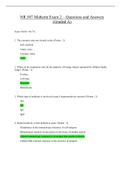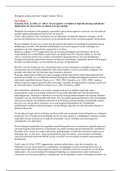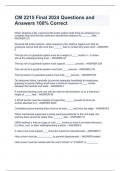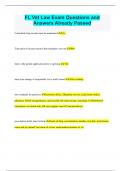Exam (elaborations)
PYC3704-EXAMPACK FOR PSYCHOLOGY RESEARCH [LATEST 2021]
- Institution
- University Of South Africa (Unisa)
PYC3704-EXAMPACK FOR PSYCHOLOGY RESEARCH/ PYC3704-EXAMPACK FOR PSYCHOLOGY RESEARCH/ PYC3704-EXAMPACK FOR PSYCHOLOGY RESEARCH
[Show more]







